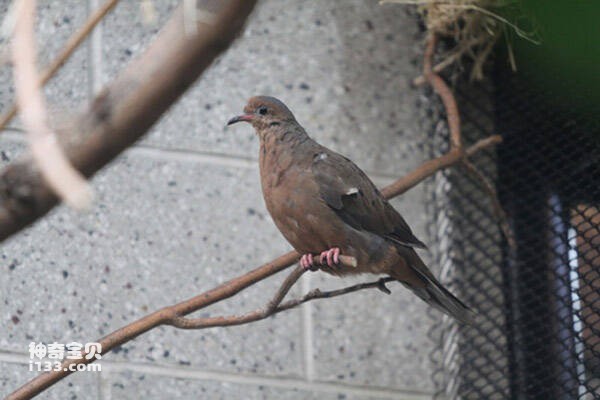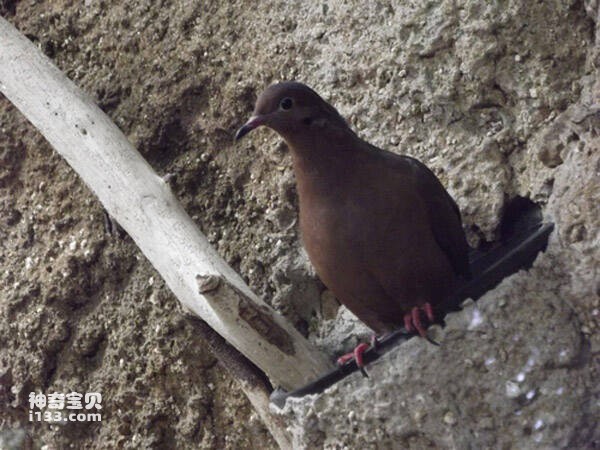Zenaida graysoni
IUCN
LCBasic Information
Scientific classification
- name:Zenaida graysoni
- Scientific Name:Zenaida graysoni
- Outline:Landfowl
- Family:
Vital signs
- length:26.5-34cm
- Weight:190g or so
- lifetime:No textual research information is available
Feature
The body is dull and the feet are developed
Distribution and Habitat
It is found on the main Island of Sogoro and Clarion Island, about 400 km to the west.
The Sogorodoves live in seasonally low, wet forests above 500 m and also migrate seasonally to the lowlands before domestic cats were introduced to the island. The timing of this migration coincides with the peak of the breeding season, during which many birds have young to feed and are widely dispersed in habitats to gather more different kinds of food. The Sogoro dove's preference for such habitats is similar to that of another medium-sized bird native to Sogoro, the Mimus graysoni.
Appearance
It is a medium sized, long-legged, mostly land bird, with a length of 26.5-34 cm, an average weight of 190 g, and a body color consistent with that of its relatives. The head and abdomen are dark yellowish-brown, with reddish brown on the upper part. The ear lines on the head are similar to those of its two relatives. The nape of the neck is bluish-gray, with bright pink feather patches on the neck, which are more prominent after moulting. Females and chicks are duller.
The most notable difference between the Sogoro dove and the mourning dove is its dull body color and developed biped, which evolved to adapt to the black lava stones and dense forest environment of Sogoro Island.
Details
Sogorodove Zenaida graysoni, also known as the Socorro pigeon, is a species of pigeon that is endemic to Socorro Island in the Pacific Ocean, where it is native, and is most common in forested areas above 500 m, but became extinct on the island in 1972. There are currently no more than 200 individuals living in the world, and the number of domesticated purebred individuals is estimated to be less than 100. A re-entry plan is being devised to bring Sogoroku back to the island.

Related to the mourning pigeon (Zenaida macroura) and Zenaida auriculata (Zenaida auriculata), the Sogoro dove was once considered a subspecies of mourning pigeon. The epithet graysoni is in honor of Zenaide Letitia Julie Bonaparte and the American ornithologist and artist Andrew J. Grayson.
The lifestyle of the companion of the Sogorodove is very different from that of the mourning dove. When Andrew Jackson Grayson first discussed the species, he referred to it as "lone pigeons" because he almost never saw a pair of them, because as soon as the offspring were able to support themselves, the parents would evicted them from the nest and the pair would be separated for a short time. This habit is designed to deal with aerial predators, because young adults are inexperienced, making them easy targets for falcons, and adults are less likely to be prey.

On islands with fewer mammals, many birds, especially the Sogorodoves, are not afraid of humans, or even dangerous domestic cats. Prior to the invasion of the island, there were no mammals among the natural predators of the Sogoro pigeon, the main predators being the red-tailed ð« - (Buteo jamaicensis) and possibly the small frigate bird (Fregata mino)
Little is known about the breeding of the Sogoro dove in the wild, but based on its parallel evolution with the Sogoro Mockingbird, only the timing of its vertical migration can be inferred to indicate that the breeding activity is most frequent in March-April each year. In artificially enclosed environments, females usually lay their eggs in nests 1 to 2.5 meters above the ground, laying two white eggs in a clutch. Hatching lasts 14-17 days, and the chicks grow their feathers 14-20 days after hatching.
Listed on the International Union for Conservation of Nature (IUCN) 2013 Red List of Threatened Species ver3.1 - Extinct in the Wild (EW).
Protect wild animals and eliminate wild meat.
Maintaining ecological balance is everyone's responsibility!








